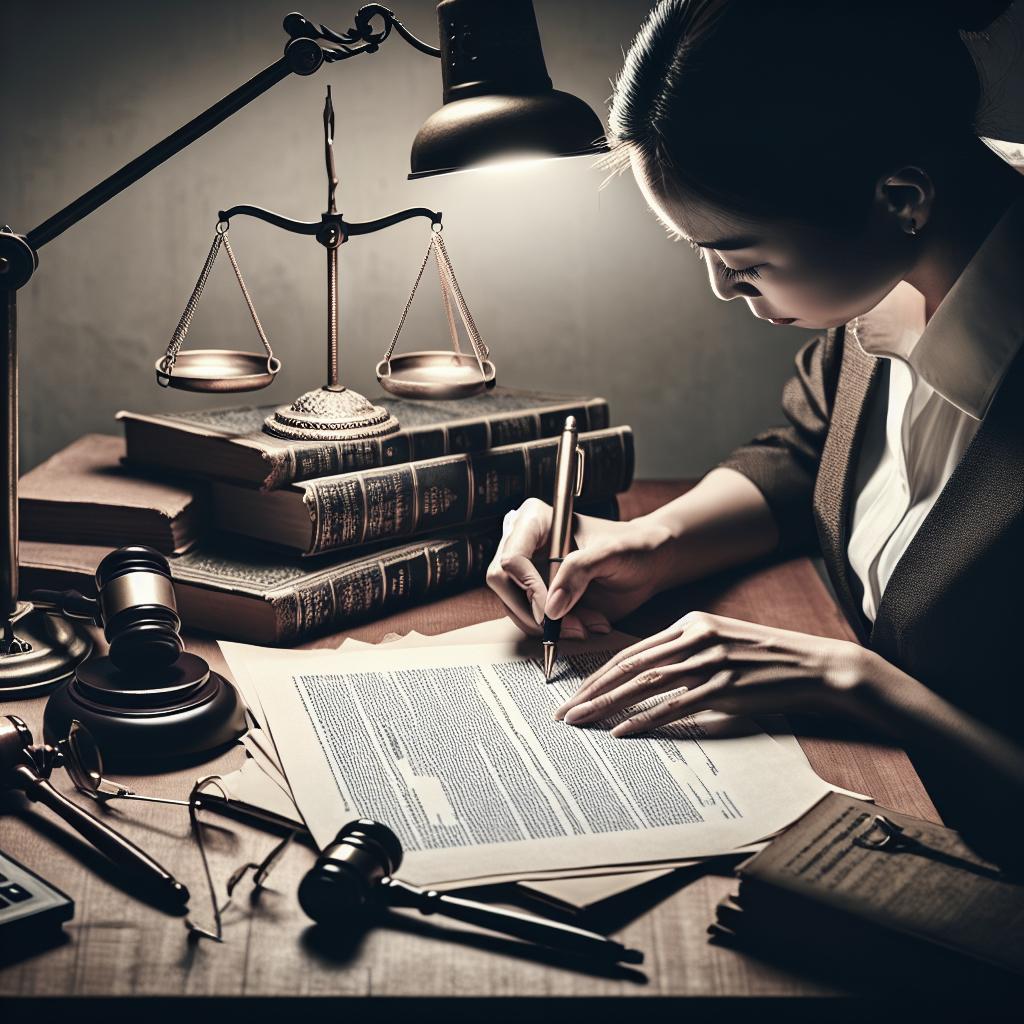“`html
How to Structure a Legal Memorandum
Legal memoranda are vital documents for lawyers, providing clear and concise arguments to support legal decisions. This blog post offers a guide to structuring a legal memorandum effectively, ensuring both clarity and persuasiveness. We’ll delve into the key components: the heading, question presented, brief answer, statement of facts, discussion, and conclusion. By adhering to this structure, you can create memos that succinctly communicate your findings and recommendations.
Heading
The heading of a legal memorandum should clearly identify the case or legal issue it addresses. It typically includes the date, recipient’s name and address, the author, file number, and a brief title or subject line. This information helps in organizing and retrieving the document among a multitude of legal papers.
Ensure precision in the heading to facilitate recognition and accountability. As legal proceedings often involve multiple documents, a well-composed heading helps in avoiding confusion, thereby aiding in the smooth progression of legal tasks.
Question Presented
The question presented is central to a legal memorandum, as it articulates the legal issue or question at hand. This section should be framed clearly and concisely, capturing the essence of the legal challenge faced by the client or the organization.
Crafting the question presented requires skill in identifying and articulating the legal issues from a broader narrative. A well-formulated question not only guides the memorandum’s discussion but also sharpens its focus, ensuring that all subsequent content is relevant and directed towards answering the question.
Brief Answer
The brief answer provides a preliminary response to the question presented. It’s intended to offer a short, direct answer that outlines the memorandum’s conclusion without going into detailed reasoning or analysis, which will follow in the discussion section.
This section should be succinct yet informative, setting the stage for a deeper exploration of the legal issues. It often acts as a preview that helps readers understand the memo’s ultimate outcome right from the beginning, which can be crucial in busy legal settings.
Statement of Facts
In the statement of facts, the relevant background information pertaining to the legal issue is outlined. This section should cover all pertinent details that have a bearing on the legal analysis, ensuring an accurate and comprehensive portrayal of events.
Facts should be presented in a neutral, objective manner, free from personal bias or interpretation. The goal is to lay a factual groundwork upon which the legal reasoning will be built in the discussion section, enabling clear and just conclusions to be drawn.
Discussion
The discussion is where the core legal analysis takes place. Here, the memo delves into the applicable laws, cases, and statutes, leveraging them to build a reasoned argument addressing the question presented.
The legal reasoning should be logical and well-structured, progressively tackling issues to arrive at a cogent conclusion. Citations to legal authorities should bolster the argument, providing compelling evidence for the positions taken. This section is usually the most extensive, reflecting the complexity of the legal issue.
Future Outlook
Upon completing the memorandum, revisiting the overall implications of the analysis can offer valuable insights. Legal memoranda, while centered on specific cases or issues, often feed into broader legal strategies and decisions.
In preparing a legal memorandum, understanding future ramifications involves anticipating potential challenges, suggesting alternative legal pathways, and contemplating the impact of legal precedents. This strategic foresight can enhance the utility of the memorandum as a dynamic legal instrument.
| Section | Description |
|---|---|
| Heading | Identifies and organizes the document with essential particulars like date and recipient. |
| Question Presented | Sets forth the central legal issue, guiding the memo’s analysis. |
| Brief Answer | Presents a concise response to the legal question, anticipating detailed discussion. |
| Statement of Facts | Outlines the relevant background information in an unbiased manner. |
| Discussion | Engages in in-depth legal analysis, leveraging laws and cases to form arguments. |
| Future Outlook | Contemplates broader implications and strategic use of the memorandum. |
“`


